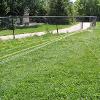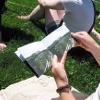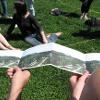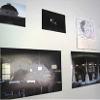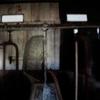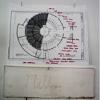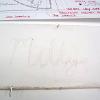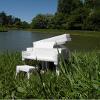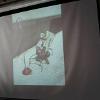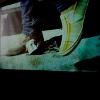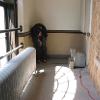Fundamental Drawing Class
Visarts, Rockville, MD 2015 - 2016
Mentoring Graduate student
Maryland Institute College of Art, Curatorial Practice, MD. 2014-2015
Studio Critiques & Lecture
Graduated Studio Critiques and Artist Lecture
The Rinehart School of Sculpture, Maryland Institute college of Art, Baltimore, MD, Oct. 07, 2013
Visiting Artist Lecture
Mokwon University, Daejeon, South Korea 2012

Host and Parasite
(Site-specific research/ installation project)
Sculpture 2, Final project
Course Instructor
Stephen Cartwright
Graduate assistant for class
Yunjeong Hong
This project is developed by Yunjeong Hong
University of Illinois at Urbana-Champaign, Illinois
Spring 2010

|
Alli Cicero, Sarah Jane Christolini. |
Project objectives:
- Understanding the relationship between a/your body and an object
- Understanding positions between society and individual, reality and fiction, and self and others
- Understanding the function of scale
- Defining a site-specific work from your own research
Project description:
Site-specific artwork is the art that happens in a certain site. Historically, it originates from conceptual art, minimalism in art, and land art. It combines the fields of design, architecture, fine art, and goes beyond them. In this project, we will make an object/sculpture based on research on a variety of materials and at the same time, we will conduct research on site-specific contexts and situate the final work in a specific site. We will begin with preliminary research about the character of materials, the places, ourselves, objects, and the possible relationships between all of these things. We will then rationalize our choice of space and explore the effective ways of visual communication for the final installation.
Throughout the course of the project, you first need to find a spot/place that catches your attention. It can be a place that you visit on your daily activities, or a new place of your choosing. For example, it can be an obvious location such as a room you use frequently, or it can be a tiny space in a crack on the wall. You then need to think about the function, the shape, and the time-based history of the space. You should define your position, your site and your relationship with the site. For instance, you can define yourself as one of the individuals of the human species, an explorer venturing into the unknown, or an artist living in this town. You might explore your body as your site. Everything that you can imagine is possible. Although the project is site specific, it might move to a fictional story or fantasy. However, try not to let preconceived notions about your desire influence your research steps. Because of high flexibility, grounded concepts and solid research for the entire process are very important.
During the installation, you might need to reconsider the importance of the work, and what will be happen after it. Do you want to keep your work in this site? If not, why? Do you want to show your work as an art project or an unexpected happening?
Note: The piece should not alter or damage the site and your location must be approved by Stephen Cartwright and Yun Jeong Hong.
Key words:
situation, potentiality, locality, specificity, field, positions in a sequence, events
